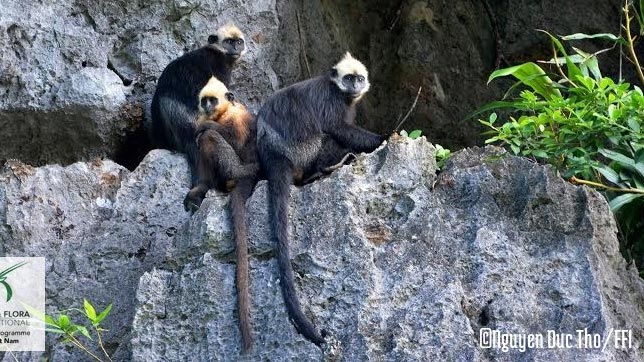11 primate species in Vietnam are critically endangered
Wednesday, 11:09, 02/12/2015
A new study by global primate experts found Vietnam in a dire situation with an increase in critically endangered species, several of which are endemic to the country.
Experts assessed the threat of extinction for 182 kinds of primates in South China, South and Southeast Asia, including 25 species that can only be found in Vietnam, and listed eleven species in Vietnam as Critically Endangered, up from seven in the 2008 list, according to the research released last month by Fauna and Flora Organization.
The monkeys have been facing “enormous” threats from hunting and habitat loss, the research found.
Species restricted to Vietnam such as Cat Ba langur (Trachypithecus poliocephalus), also known as golden-headed langur, only has around 60 individual less, while Delacour’s langur (Trachypithecus delacouri) and Tonkin snub-nosed monkey (Rhinopithecus avunculus) now only have a population of around 200 individuals each.
 |
| Cat Ba langurs, endemic to the island of Cat Ba in northern Vietnam, only has around 60 individuals left according to a recent research. Photo: Nguyen Duc Tho/Fauna and Flora Organization |
They are also three Vietnamese species in the list of 25 most endangered primates globally.
Other critically endangered primates in Vietnam are the grey-shanked douc (Pygathrix cinerea), red-shanked douc (Pygathrix nemaeus), black-shanked douc (Pygathrix nigripes), Cao vit gibbon (Nomascus nasutus), Western black crested gibbon (Nomascus concolor), northern white-cheeked gibbon (Nomascus leucogenys), Southern white-cheeked gibbon (Nomascus siki) and Con Dao macaque (Macaca fascicularis condorensis).
Dr. Ben Rawson, director of Fauna and Flora in Vietnam, said in a press release that the new assessments highlight the importance of Vietnam as a center of primate conservation globally.
“They also highlight that Vietnam is at risk of being the first country to lose a primate species to extinction,” he said.
No primate extinctions have yet been recorded in the 20th or 21st centuries.
